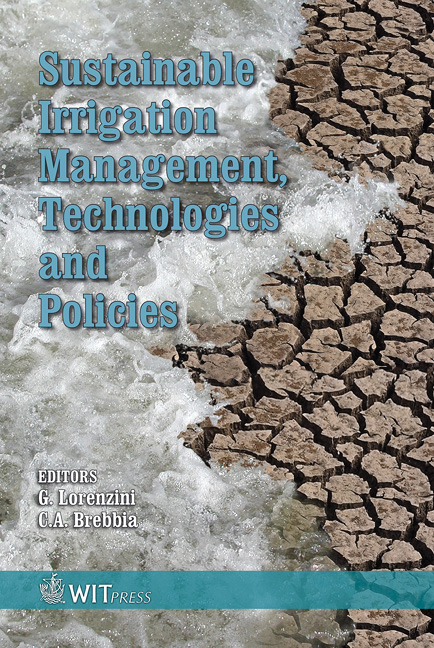Irrigation Management: The Optimization Perspective
Price
Free (open access)
Transaction
Volume
96
Pages
10
Published
2006
Size
290 kb
Paper DOI
10.2495/SI060231
Copyright
WIT Press
Author(s)
M. da Conceição Cunha
Abstract
Irrigation management deals with many different decisions: the selection of economically viable cropping patterns, allocation of land per crop, allocation of water resources per crop, irrigation scheduling, management of irrigation deficit, etc. Plants need appropriate amounts of water, and its distribution during the full growing cycle has a tremendous influence on the final crop yield. This means that managing the soil water content is crucial to obtain an optimal allocation of water resources, supposing that the other production factors are adequate. The use of decision models to help irrigation management appears to be an interesting approach, as they are capable of handling different facets of such problems (economic, physiological, environmental, etc.) all together. This paper presents a synthetic state-of-the-art literature review of the optimization models for these purposes. The different agricultural production functions and their inclusion in the decision models are discussed. Keywords: irrigation management, agricultural production functions, optimization models. 1 Introduction Water is a scarce good in many regions of the world, and simultaneously it is the most important factor in some production processes, like agriculture. Supposing that the other production factors are at an adequate level, managing the soil water content is crucial to obtaining an optimal allocation of water resources. Irrigation supplements rainfall and can help to overcome the main risks associated with the uncertainty of hydrological events. In arid and semi-arid regions irrigation is intrinsically related to the availability of water resources, and thus deficit irrigation can occur. A benefit-cost analysis of irrigation systems should take
Keywords
irrigation management, agricultural production functions, optimization models.





